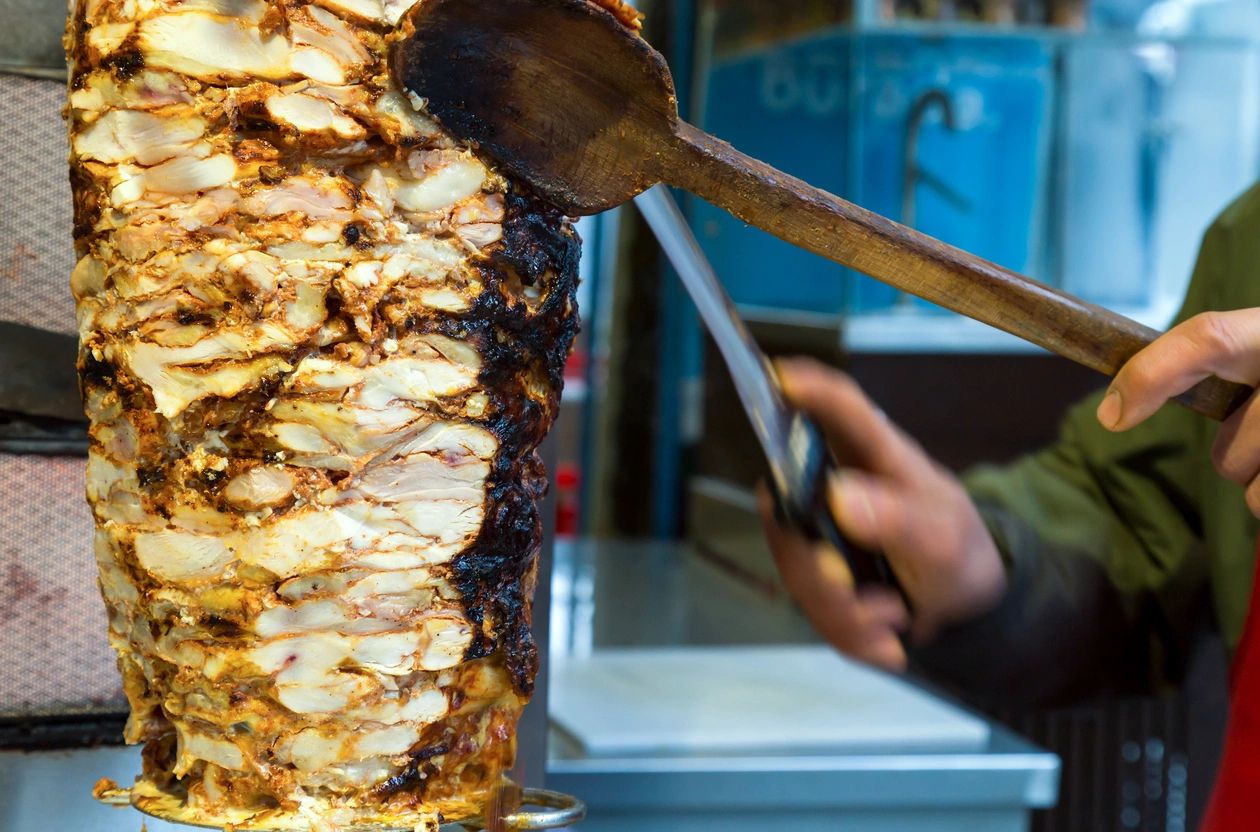Street food has an enchanting way of capturing the essence of a culture in a bite-sized experience. Whether it’s a crispy snack sold by a vendor in Bangkok, or a savory dish in the bustling streets of Mexico City, street food connects people to their heritage and history. As you travel through cities across the world, it’s impossible to ignore the universal appeal
of street food. It offers more than just a quick meal—it’s a celebration of local traditions, flavors, and stories passed down through generations. From the savory aromas to the bustling atmosphere of street markets, each dish tells a unique story, connecting you to the heart of a city or village. Exploring global street food not only tantalizes your taste buds but also offers a window into the rich history and culture of diverse regions.
A Taste of Tradition: Street Food in Asia
Asia is a continent teeming with diversity, and its street food culture is just as varied. From the vibrant streets of Bangkok to the bustling markets of Hanoi, Asian street food serves as a window into the culinary traditions of different cultures.
In Vietnam, the humble Pho has become synonymous with the country itself. This aromatic noodle soup, rich with flavors of ginger, herbs, and spices, can be found on every corner, with vendors serving up steaming bowls that offer comfort and warmth. Similarly, in Thailand, Pad Thai, a stir-fried noodle dish made with shrimp, tofu, peanuts, and lime, offers a tantalizing balance of salty, sweet, sour, and spicy. The dish is a perfect reflection of the bold flavors that define Thai cuisine.
In India, street food is a celebration of spices, and Chaat is the epitome of this vibrant street food culture. This snack, made from a variety of ingredients like chickpeas, potatoes, yogurt, and tangy tamarind chutney, is an explosion of flavors and textures, from crunchy to creamy, sweet to savory. It’s not just a dish, but an experience that reflects India’s culinary vibrancy.
Each of these dishes tells a unique story—whether it’s the centuries-old tradition of Pho or the evolution of Pad Thai from a simple street snack to a globally recognized dish. The variety of street food across Asia offers something for every palate, making it an exciting culinary adventure.
Latin American Street Food: Vibrant, Flavorful, and Fun
Latin American street food is characterized by bold flavors, fresh ingredients, and the influence of ancient cooking techniques. Each country in the region has developed its own take on street food, making it a true melting pot of culinary creativity.
In Mexico, tacos reign supreme. Whether filled with juicy al pastor pork, tender beef, or crispy fish, tacos are a quick and delicious meal enjoyed by people from all walks of life. The combination of soft tortillas, savory fillings, and vibrant toppings like cilantro, onions, and salsa makes every bite a fiesta for the taste buds. Tacos al pastor, with their distinctive marinated pork, are particularly beloved for their smoky, spicy flavor.
In Colombia, arepas are a beloved street food snack. Made from cornmeal and filled with cheese, meats, or beans, these hearty treats are often served with a variety of sauces and salsas. Their versatility makes them a perfect street food, enjoyed at any time of the day.
Peru’s anticuchos are skewered, grilled meat (often beef heart) marinated in a spicy vinegar-based sauce. This dish, once thought of as humble food for the working class, has become a celebrated delicacy, reflecting the rich flavors and culinary creativity of Peru.
Latin American street food is more than just a meal—it’s a reflection of the region’s history, blending indigenous ingredients with influences from European, African, and Asian cuisines. The result is a vibrant culinary tradition that is as diverse as the region itself.
European Street Food: From the Mediterranean to Eastern Europe
In Europe, street food varies greatly, from the sunny Mediterranean shores to the heart of Eastern Europe. Each region has its own take on quick, flavorful eats, often incorporating fresh, locally sourced ingredients.
In Greece, souvlaki is a beloved street food, consisting of skewered and grilled meat, usually served with pita bread and accompanied by tangy tzatziki sauce. This dish is a staple of Greek street food culture, where simplicity and quality ingredients take center stage. The smokiness of the grilled meat, combined with the refreshing coolness of tzatziki, creates an unforgettable culinary experience.
In Italy, pizza al taglio, or “pizza by the slice,” is a popular street food, especially in Rome. Sold by the square, these pizzas are often topped with fresh, seasonal ingredients like tomatoes, mozzarella, and basil. The crust is crispy, the toppings are simple yet flavorful, and the entire experience of eating pizza on the go captures the spirit of Italy’s vibrant food culture.
Eastern Europe offers its own unique take on street food, with zapiekanka from Poland standing out. This open-faced sandwich is topped with mushrooms, cheese, and a variety of sauces, often served from street-side vendors. The warm, comforting nature of zapiekanka, combined with its affordability, makes it a popular choice for locals and tourists alike.
Whether it’s the Mediterranean warmth of souvlaki or the comfort of Polish zapiekanka, European street food is a reflection of the continent’s diverse culinary heritage.
African Street Food: A Melting Pot of Flavors
African street food is as diverse as the continent itself, with flavors that range from spicy and smoky to savory and sweet. Street food in Africa often reflects the region’s rich culinary traditions, combining indigenous ingredients with influences from various cultures over the centuries.
In Nigeria, suya is a beloved street food. This skewered meat, typically beef, is coated in a spicy peanut mixture and grilled to perfection. The dish is often served with onions, tomatoes, and spicy pepper sauce, creating a smoky and intensely flavorful experience.
South Africa’s bunny chow is another popular street food, originating in Durban. This dish involves hollowing out a loaf of white bread and filling it with curry, often made with chicken, lamb, or beans. The bread acts as both a container and a part of the meal, soaking up the rich, aromatic curry.
In Egypt, koshari is a classic street food dish made with rice, lentils, chickpeas, and pasta, all topped with a tangy tomato sauce and fried onions. This dish reflects the resourcefulness of Egyptian street food vendors, who use simple ingredients to create hearty, filling meals.
African street food not only celebrates the diverse culinary traditions of the continent but also highlights how food is a medium through which culture, history, and community are shared.
Street Food Stories: The Heart Behind the Dishes
Street food is much more than just a quick meal—it’s a way for vendors to connect with their communities. Each dish has a story, and many street vendors have passed down their recipes through generations. These recipes, often closely guarded, reflect the heart of local culture, and the vendors who prepare them are often viewed as guardians of tradition.
Street food also plays an important economic role. For many, selling food on the street is a livelihood, supporting families and small businesses. In some cases, street food vendors have become local celebrities, known for their signature dishes and dedicated following.
The stories behind street food reveal how deeply intertwined food is with identity, culture, and community. Each vendor has a story to tell, from the origins of their recipes to the experiences they share with customers. These stories are an integral part of the global street food phenomenon.
Summary
The allure of global street food is undeniable. From the bustling streets of Asia to the vibrant corners of Latin America, Europe, and Africa, street food serves as a gateway to understanding the diverse cultures and histories that shape the world’s culinary landscape. Each dish is a reflection of its creator’s heritage, passion, and connection to the community. Embracing street food is not just about enjoying delicious flavors—it’s about experiencing the world in a new and meaningful way. Whether it’s a bowl of Vietnamese Pho, a Mexican taco, or a South African bunny chow, street food allows us to connect with the world’s rich and diverse traditions, one bite at a time.
Please like, comment, and share this article if you found it helpful and
informative.
Visit https://bigtownbulletin.com if you would like to see more of this content.
Please like, comment, and share this article if you found it helpful and
informative.
For more news check out Big Town Bulletin News
For more from Big Town Bulletin check out Big Town Bulletin


